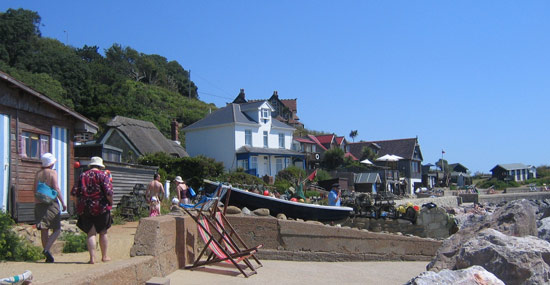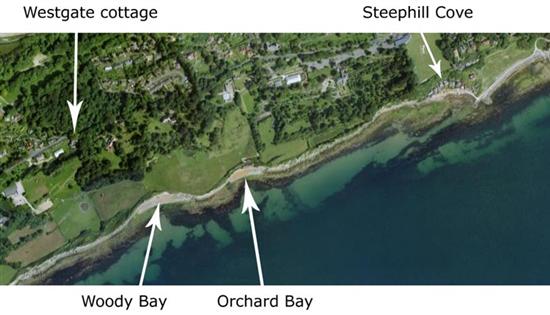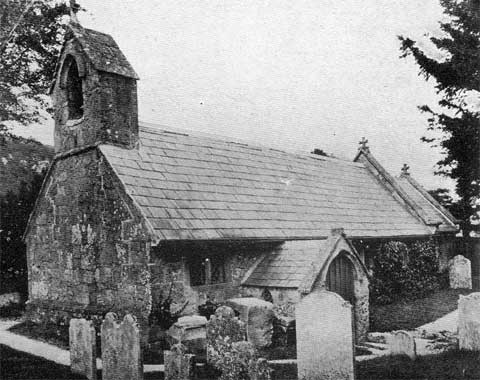The local areaAround St Lawrence, the undercliff and Ventnor
Running for six miles along the most southerly edge of the island, from Bonchurch to Blackgang, the Undercliff is a unique geological strip of land with towering 700ft cliffs created at the time of the last Ice Age. They not only protect this stretch of coast from cold northerly winds but also form a dramatic backdrop for the spectacular scenery that has been the inspiration for so many famous poets, writers and artists.

This is the view from the coastal path as you approach Ventnor from Steephill Cove.
Turner sketched in Orchard's Bay, one of the multitude of small coves that used to be haunted by smugglers and now provide secluded havens for young and old who wish to escape from the better known and more crowded resorts. Tennyson, Dickens, Keats, Swinburne and Alfred Noyes are among those who immortalised in their writings this romantic and rugged stretch of coastline. Admiral of the Fleet Lord Jellicoe, of Jutland fame, lived at St Lawrence for many years and swam almost daily in Orchard's Bay. Queen Victoria and Queen Mary were frequent visitors. The remains of dinosaurs, hidden deep inside these towering cliffs for millions of years, are occasionally found here, and have been again after the recent massive landslides.

This photo was taken in Steephill Cove which is a lovely place to spend a day. There are about 15 houses, a cafe and a seafood restaurant here. It is a short walk from Westgate Cottage through the botanical gardens and as the nearest road is a quarter of a mile away, it is incredibly peaceful and quiet.
In the heart of the Undercliffe lies the village of St Lawrence, with a 13th century church once recognised as the smallest in the United Kingdom. It is still small, measuring only about 20ft by 12ft, with a low north door on which one of its former rectors was reported to have struck his head and killed himself when hurrying to the church, having suddenly remembered that it was a Sunday.
St. Lawrence is internationally recognised as an area of outstanding natural beauty.

This is a satelite plan view of the immediate area. It is a short walk to the the costal path where you can choose to walk West towards St Catherines Lighthouse and the Buddle Inn or East through the Botanical Gardens and towards Steephill Cove and Ventnor. Click on this image for a larger version.

St Lawrence Church dates from the 13th century. Before the addition of a chancel in 1830 it was only 25 feet long and 11 feet wide and was considered the smallest church in England
|